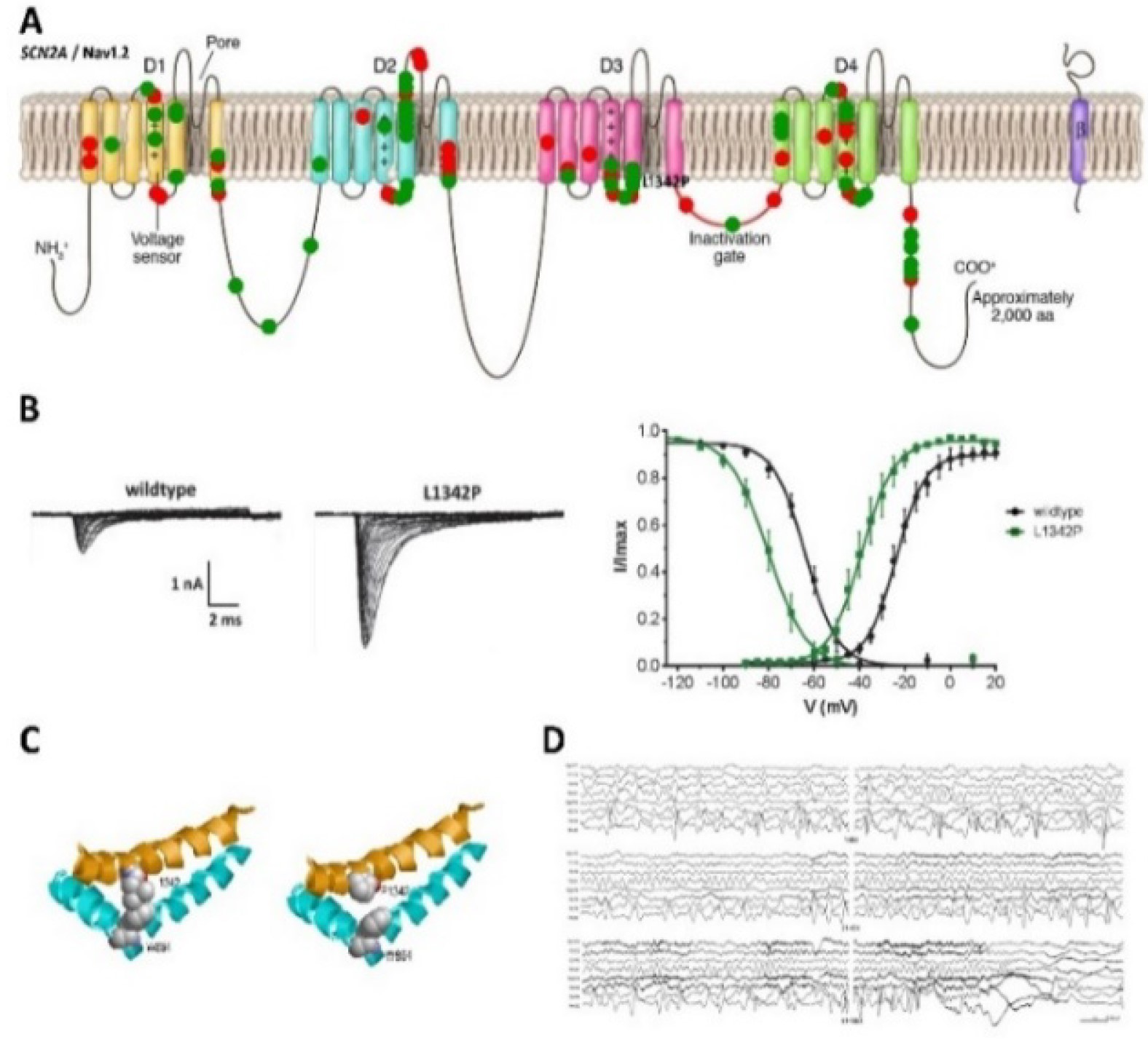GoF mutations - Epileptic encephalopathy
De novo GoF mutations in the SCN2A gene cause an early-onset, Dravet syndrome-like epileptic encephalopathy (EE) with severe intellectual disability and increased risk of sudden epileptic death. SCN2A encodes the Nav1.2 sodium channel and most disease-causing mutations are missense changes that increase channel activity and excitability of neurons in the central nervous system (CNS). We will select specific SCN2A mutations based on real-life patient availability and their targetability. Uniquely, we will develop a humanized mouse model of Dravet syndrome-like EE with inducible expression of the mutant allele at any developmental stage. Together with WP1, we will develop novel CRISPR-Cas base editing therapies to target disease-causing mutations (e.g. SCN2AL1342P). Additionally, we will design bivalent chemical probes that conjugate a binder for mutant SCN2A to a recruiter of conjugation enzymes or ligase (E2, E3- complexes). These probes will be screened with enzymatic ubiquitylation assays. We aim to rescue the phenotype in vitro (neuroblastoma cells and patient-derived iPS cells) and in vivo (humanized mouse model). For in vivo CNS targeting, we will use AAV and non-viral delivery (exosomal) carriers.

Figure 1. Pathophysiology of Dravet syndrome caused by SCN2A mutations. A) Structure of human Nav1.2 channel. Circles show SCN2A missense mutations linked to EE. Green circles, mutations targetable by CRISPR-Cas. B) Whole-cell Na+ current traces (left), and activation/ inactivation curves (right) of recombinant WT or mutant (L1342P) Nav1.2 channels. Mutants have larger Na+-currents hyperbolic shifted activation-inactivation curves. C) Modeling mutated Nav1.2 shows interactions with adjacent repeats (left), which cannot be formed by the shorter proline side chain (right). D) EEG recordings of a patient with L1342P mutation at 21 months of age. Focal seizure pattern with evolution of rhythmic left hemispheric theta activity, and rhythmic sharp waves over the right temporo-occipital region.